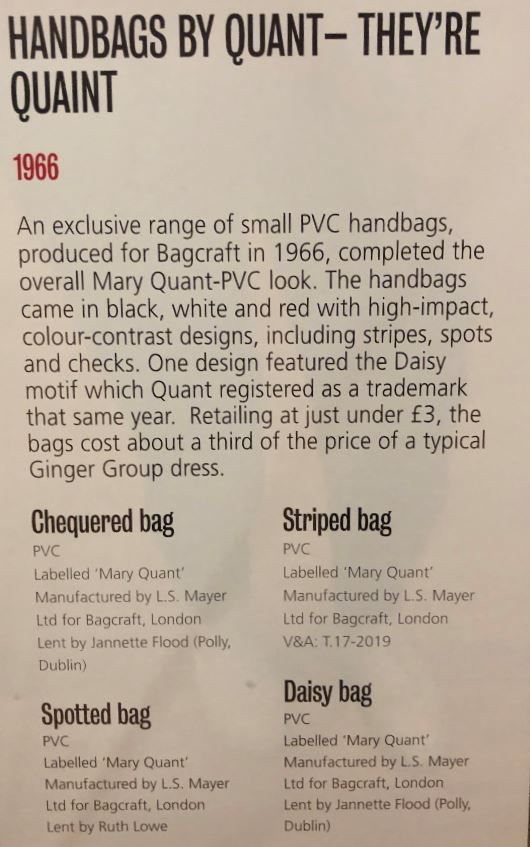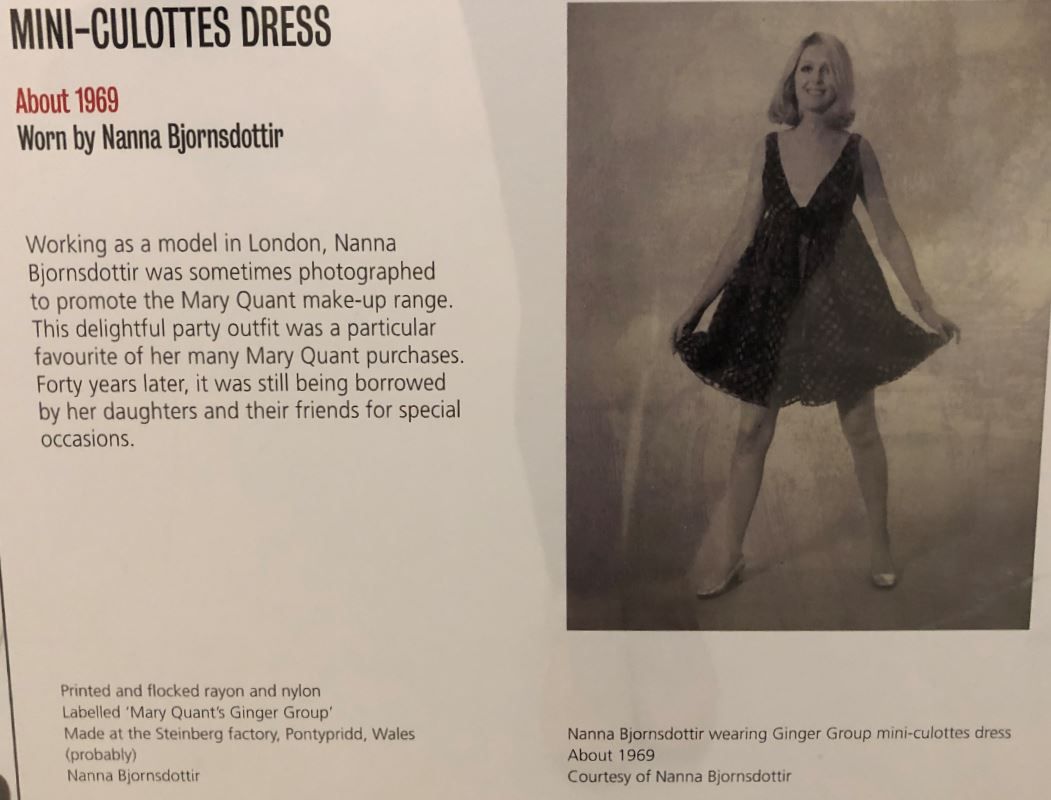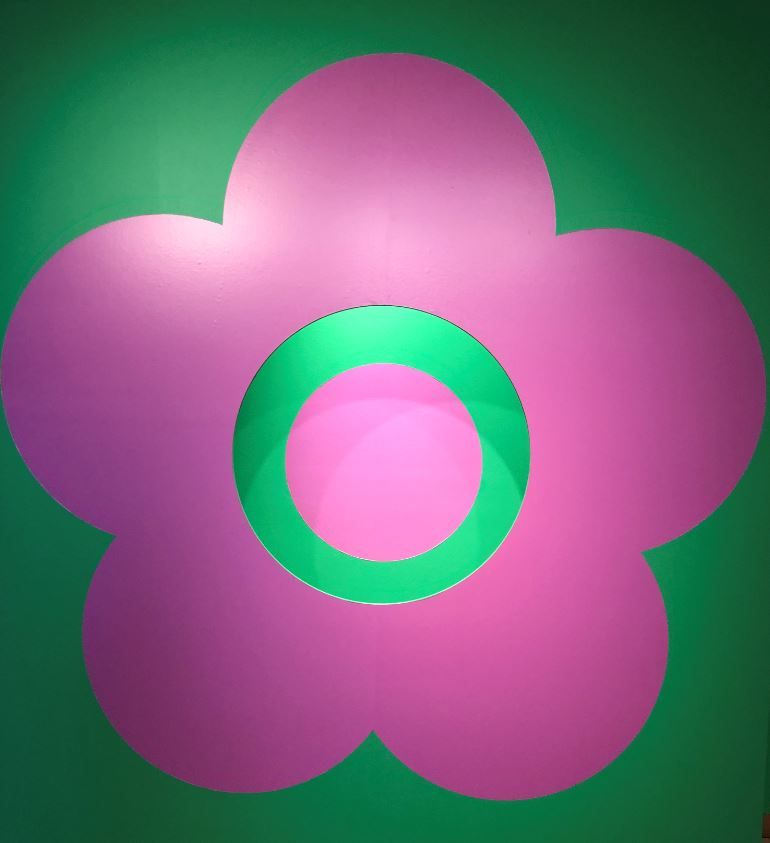Mary Quant



During my travels through country Victoria in May 2021, I visited the Mary Quant Exhibition at the Bendigo Art Gallery, exclusively on show in Australia from the Victoria and Albert Museum in London.
The exhibition explores the years between 1955 and 1975, when Mary Quant revolutionised the high street, harnessing the youthful spirit of the sixties and new mass production techniques to create a new look for women.

Drawing on the V&A’s extensive fashion holdings, Dame Mary Quant’s Archive and private collections, the exhibition brings together over 110 garments as well as accessories, cosmetics, sketches, photographs and even Quant’s own line of fashion dolls, known as Daisy dolls, a rival to Barbie.1


Quant personified the energy and fun of swinging London and was a powerful role model for the working woman. Challenging conventions, she popularised the miniskirt, colourful tights and tailored trousers – encouraging a new age of feminism.
Ahead of her time in marketing and promotion, Quant herself was the embodiment of the label. Her distinctive, photogenic style and playful energy made her the ultimate ambassador for the brand. From small boutique to international label, Quant revolutionised fashion with energy, flair and rebellion.1
Mary marketed her own cosmetics range and her sales staff were young hip women which appealed to the demographic she was targeting. Innovative ideas like instructions written as cartoons added to the fun of getting dressed up.
She invented waterproof mascara, and was the lady who popularised the ‘bob’ haircut – invented for her by famous hair designer Vidal Sassoon.


The handbags were a big hit in bold patterns and shapes.



Many of her garments stood the test of time, as with the mini-culottes dress below. It would be equally fashionable to wear today.


I was thrilled to see a mustard coloured dress which featured in a documentary on the intricacies of conservation work done by the V&A in London.
As noted on the storyboard, they acquired the dress via an extensive advertising campaign. It had languished in someone’s loft for years, still with wine stains. It was remarkable to see it displayed now in pristine condition and looking brand new.


Celebrities synonymous with Quant's designs during the Sixties were Twiggy, John Lennon, Pattie Boyd, Audrey Hepburn, Jackie Bowyer and Ika Hindley.
Whenever there is a special event at the Bendigo Art Gallery the town gets in on the act. For this exhibition a mural representing Mary Quant in the Rosalind Park Piazza was commissioned.
After discussions with a local street art group, Nacho Station, artist Bjarni Wark (aka Happy Decay) was awarded the task. Happy Decay had been involved in other large street art activations, and his work was perfect to represent Quant: Bold and Bright!
A brief was set: creating a circular mural using bright colours associated with the '60s at the piazza in Rosalind Park. The painting of the mural took place over 4 days, is roughly 200m2 in size and fills the whole area of the Piazza.1
It is hard to photograph but as you can see from the short video below, its fun to walk across and adds bold colours to the piazza. You'll also get a speedy glimpse of Anne's home town.
Ernestine Carter, an authoritative and influential fashion journalist of the 1950s and 1960s wrote: "It is given to a fortunate few to be born at the right time, in the right place, with the right talents. In recent fashion there are three: Chanel, Dior, and Mary Quant.
In 1963 Quant was the first winner of the Dress of the Year award. In 1966 she was appointed Officer of the Order of the British Empire (OBE) for her outstanding contribution to the fashion industry. She arrived at Buckingham Palace to accept the award in a cream wool jersey minidress with blue facings.4
Born in 1930, Mary Quant continues to resonate with women, young and old.






Credits:
- bendigoregion.com.au
- My own photos taken at the exhibition
- collections.vam.ac.uk and pinterest
- wikipedia
- englishenglish.biz
